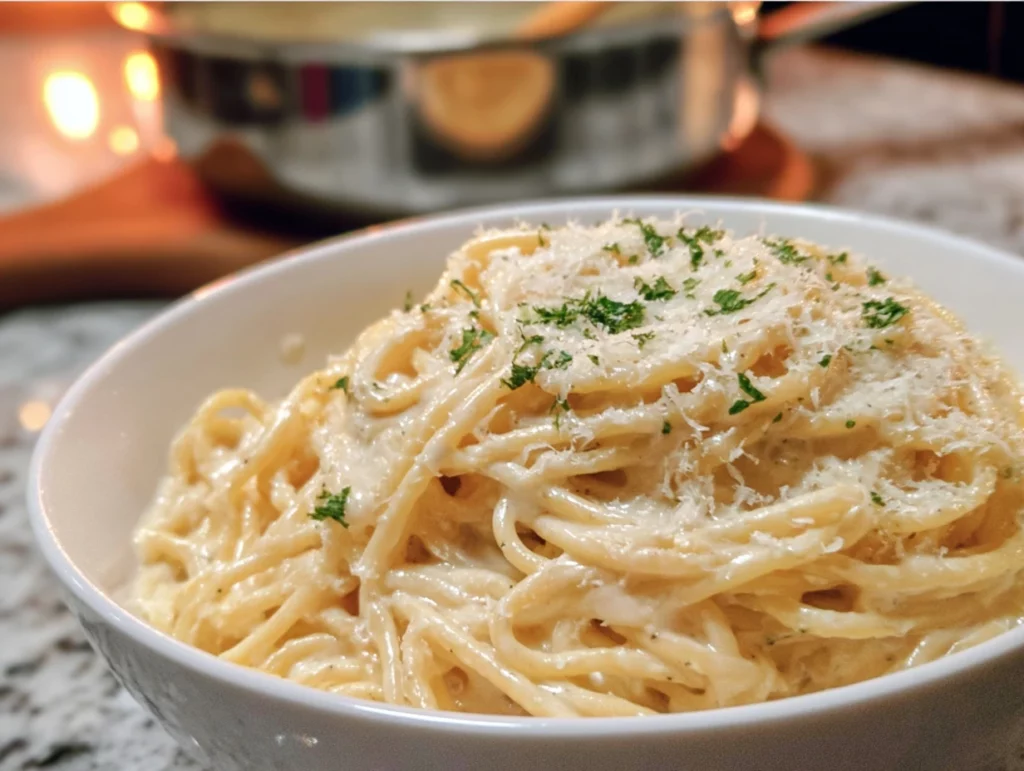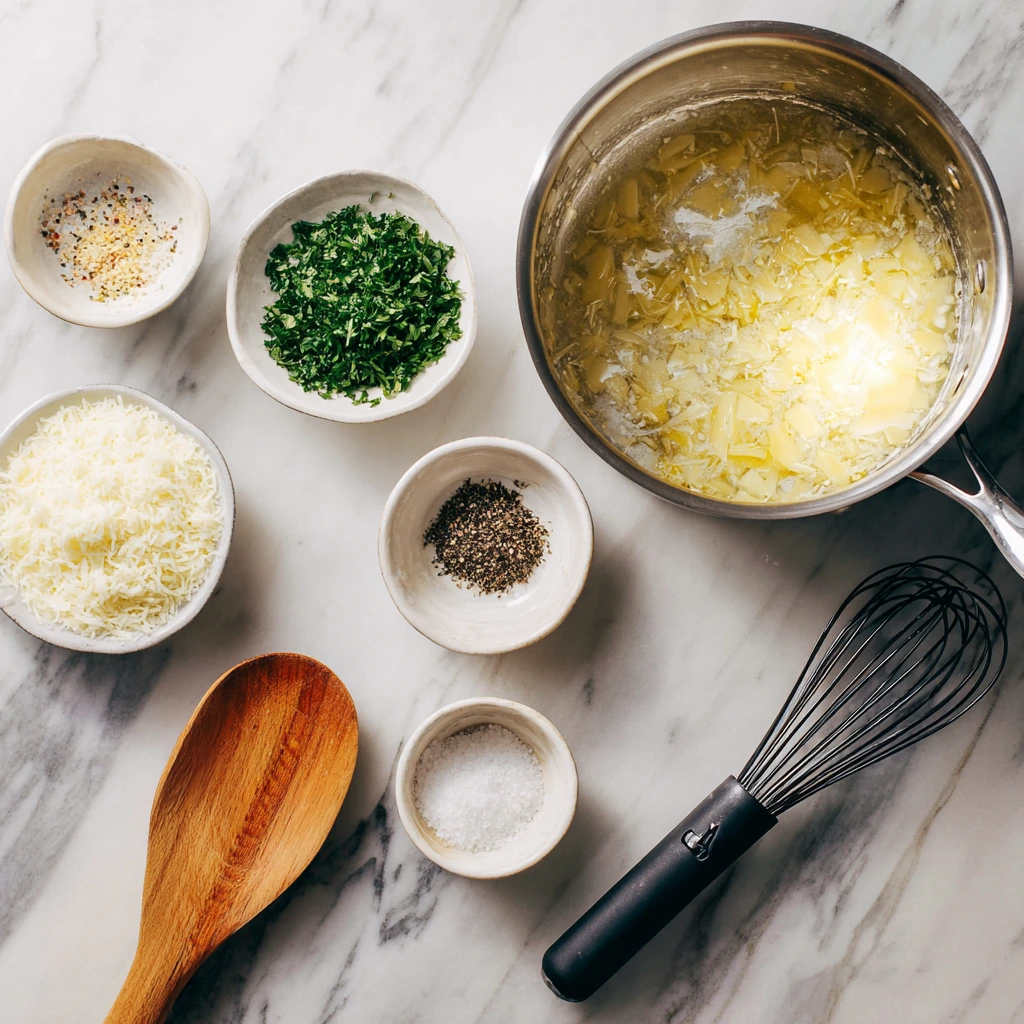If there’s one sauce that turns a simple weeknight pasta into something that feels special, it’s Alfredo. This version is the classic, no-flour, silky kind made with just butter, cream, and Parmesan—rich but balanced, and unbelievably smooth when you treat the ingredients right. I love this recipe because it’s fast (truly 15 minutes), flexible (amazing on fettuccine, yes, but also dreamy over roasted broccoli, seared chicken, or shrimp), and it uses simple pantry staples. When you follow a few key techniques—gentle heat, fresh Parmesan, and a quick simmer—you get that velvety, restaurant-quality texture every time.
A quick note on cheese: freshly grated Parmesan is non-negotiable here. Pre-shredded cheese is often coated with anti-caking agents that don’t melt as smoothly, which can lead to a grainy sauce. Grab a block and a fine grater; you’ll taste the difference. And about the heat: Alfredo loves low, steady warmth. Keep the sauce just at a gentle simmer and you’ll preserve that glossy, emulsified finish.
This recipe also scales beautifully. Cooking for two? Halve it. Feeding a crowd? Double it and keep it warm on the lowest possible heat, stirring now and then. In Part 1 below, we’ll set up the base and build flavor. In Part 2, we’ll whisk in the cheese, season, and finish the sauce so it coats pasta like a dream.
Ingredients
4 tablespoons unsalted butter
3 garlic cloves, minced
1 ½ cups heavy cream
1 ½ cups freshly grated Parmesan cheese
1/2 teaspoon black pepper
Salt to taste
1 tablespoon chopped parsley (optional)
Steps
1) Melt the butter and bloom the garlic.
In a medium saucepan, melt the butter over medium heat. When it’s fully melted and just starting to foam, add the minced garlic. Sauté for 1 to 2 minutes, stirring often, until the garlic is fragrant and lightly softened. Avoid browning; if the garlic starts to color, reduce the heat. This step builds the aromatic base of the sauce, so gentle is the name of the game.
2) Add the cream and bring to a gentle simmer.
Slowly pour in the heavy cream while stirring to combine. Keep the heat at medium or just below and bring the mixture to a gentle simmer—look for small, lazy bubbles around the edges, not a rolling boil. Let it simmer like this for 2 to 3 minutes, stirring occasionally. This brief simmer slightly reduces the cream and sets you up for a thicker, silkier sauce without any flour.
3) Prep your Parmesan while the cream warms.
As the cream simmers, make sure your Parmesan is freshly and finely grated. The finer the grate, the faster and smoother it melts. Measure out the 1 ½ cups and keep it within arm’s reach. Turn the heat down to low right before you’re ready to add the cheese. Low heat is crucial to prevent the cheese from clumping or becoming grainy.
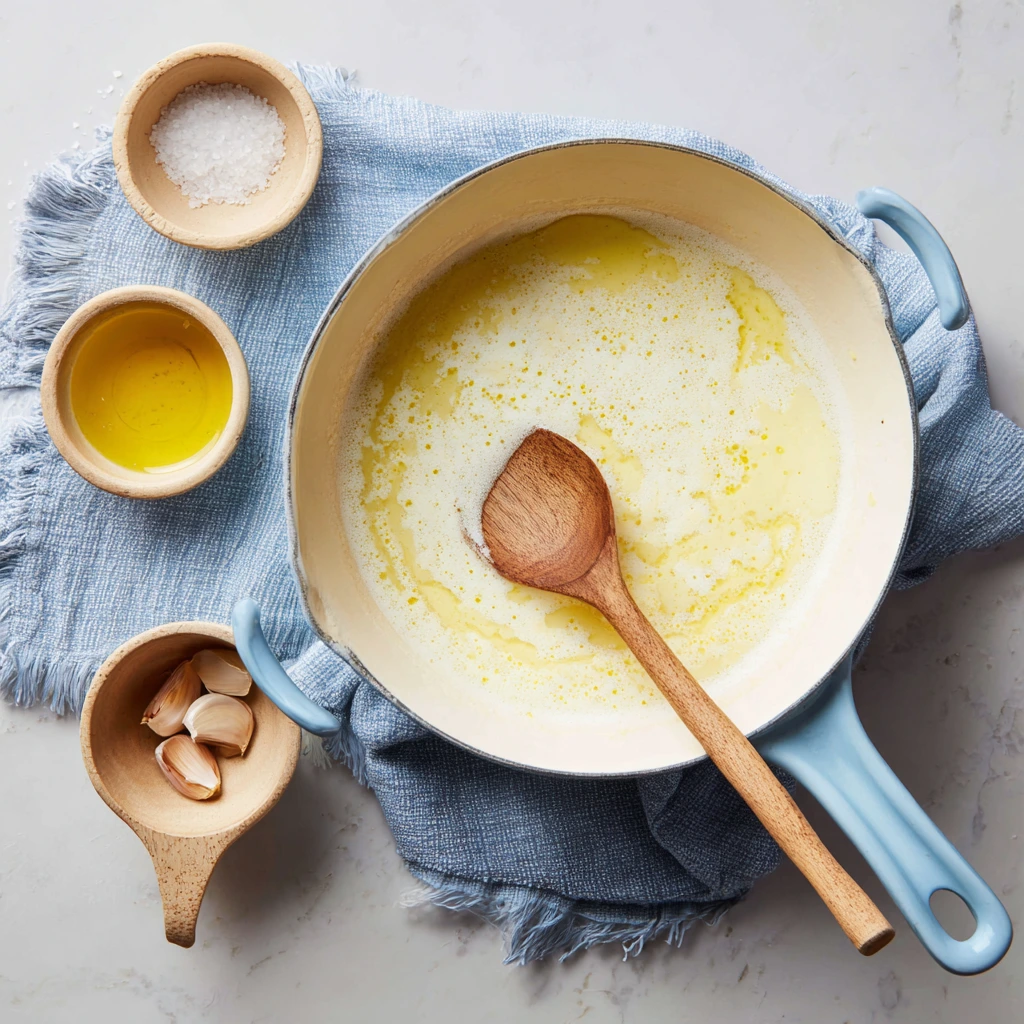
We’ve got the cream warmed and ready, and the Parmesan is finely grated—perfect. Now it’s time to finish the sauce so it’s smooth, rich, and ready to cling to every ribbon of pasta or drizzle over your favorite protein.
4) Whisk in the Parmesan—low and slow.
Turn the heat to low. Sprinkle in the Parmesan gradually (a small handful at a time), whisking continuously after each addition until fully melted before adding more. This slow incorporation keeps the sauce velvety and prevents clumping. If the sauce looks like it’s thickening too quickly, take the pan off the heat for 30 seconds, then resume whisking. You’re aiming for glossy and smooth.
5) Season and fine-tune the texture.
Stir in the black pepper and a pinch of salt, then taste and adjust. Parmesan is salty, so you may need less salt than you think. For a thicker sauce, let it gently simmer for about 1 extra minute on low heat, stirring constantly. If it gets a touch too thick (it happens!), whisk in a splash of cream to loosen it back up.
6) Finish with parsley (optional).
Fold in the chopped parsley for a fresh, lightly herby finish. It adds color and a nice contrast to the richness without competing with the cheese.
7) Serve immediately.
Alfredo shines when it’s hot and silky. Toss it right away with freshly cooked pasta, spoon it over steamed or roasted vegetables, or serve it alongside seared chicken or shrimp. If you’re pairing with pasta, take the pot off the heat before combining so the sauce doesn’t over-reduce. Toss until every strand is coated and glossy.
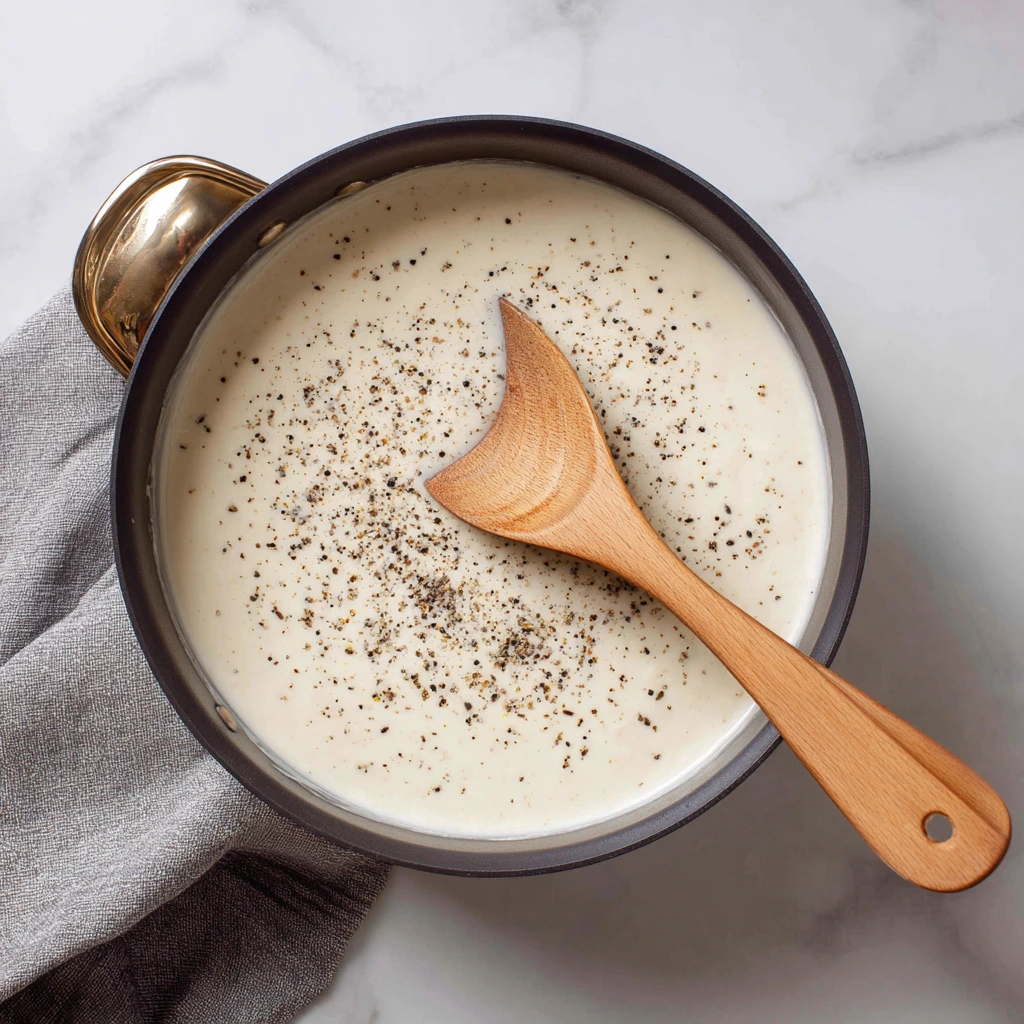
Pro Tips for Success
Control the heat. Keep the sauce at a gentle simmer before adding cheese, then switch to low. High heat can cause the cheese to separate or become grainy.
Grate it fine. The finer your Parmesan, the smoother your sauce will be. A microplane or the small holes on a box grater are ideal.
Adjust thickness on the fly. Too thin? Let it barely simmer for 30–60 seconds, stirring. Too thick? Whisk in a small splash of cream until it loosens.
Salt thoughtfully. Parmesan brings saltiness. Always taste before adding more salt at the end.
Serve promptly. Alfredo thickens as it cools. If it sits a few minutes, whisk in a teaspoon or two of cream to restore that luxurious flow.
Scaling the recipe. You can easily halve or double this recipe. If doubling, use a wider saucepan and add the cheese extra gradually for even melting.
Pairing guide. This amount of sauce generously coats about 8–12 ounces of dried pasta (depending on how saucy you like it). For vegetables, it’s enough for a full sheet pan of roasted broccoli or cauliflower.
Easy Variations to Try
Lemon-Pepper Alfredo: Add 1 teaspoon fresh lemon zest and an extra 1/4 teaspoon freshly ground black pepper right after the cheese melts. Bright and punchy, especially with chicken or asparagus.
Roasted Garlic Alfredo: Swap the sautéed minced garlic for 3–4 cloves of soft, mashed roasted garlic. It’s milder and sweeter, with a deeper garlic flavor.
Nutmeg Whisper: A tiny pinch (⅛ teaspoon) of freshly grated nutmeg stirred in with the pepper adds warmth and classic Italian cream-sauce nuance.
Herb Lift: Stir in 1–2 teaspoons of finely chopped basil or chives at the end for a fresh finish (in addition to or instead of parsley).
Seafood-Ready: For shrimp or scallops, keep the sauce slightly looser (add a touch more cream) so it coats without feeling heavy.
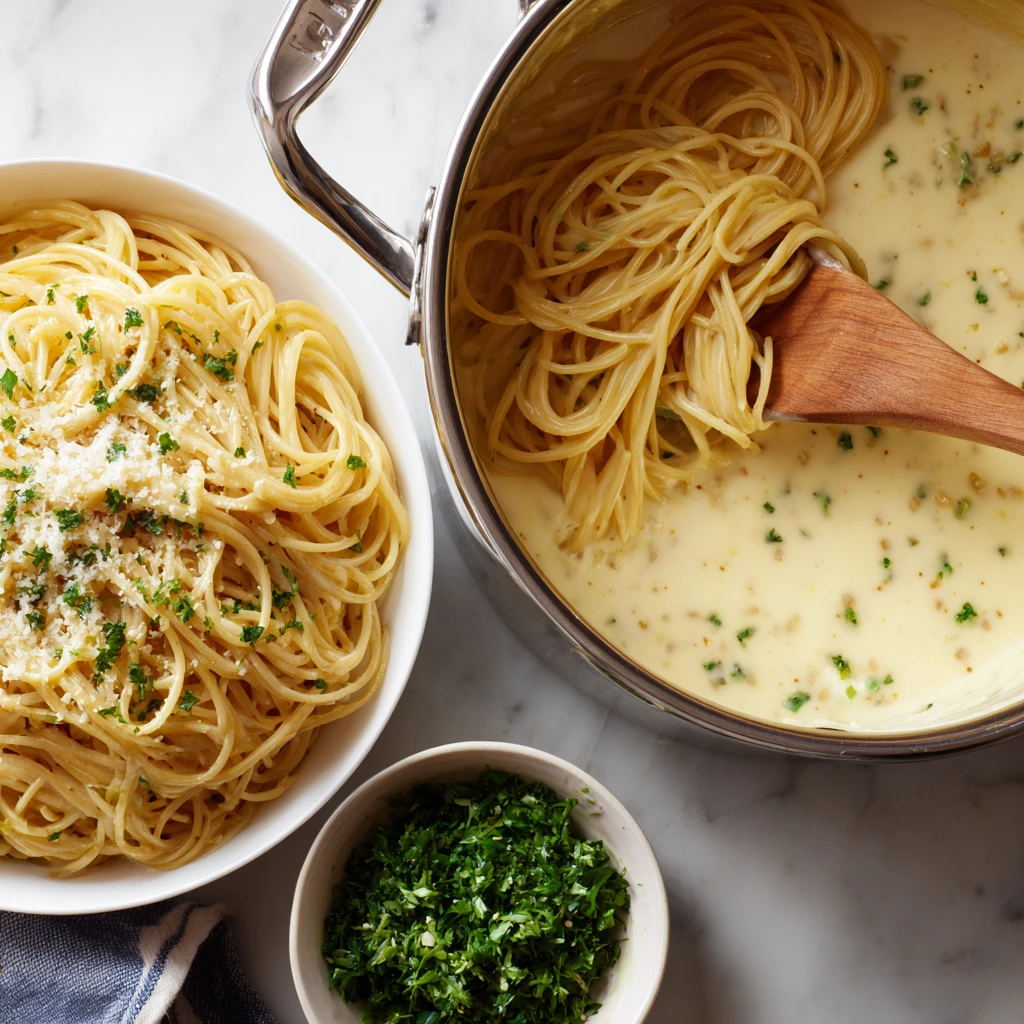
Make-Ahead and Reheat Notes
You can make the sauce up to a day ahead. Cool it quickly, store airtight in the refrigerator, and reheat gently over low heat, whisking often. Add a splash of cream to refresh the texture if it has thickened. Avoid boiling during reheat—that’s the fast track to separation.
Why did my Alfredo sauce turn grainy?
Graininess usually comes from pre-shredded cheese (anti-caking agents don’t melt smoothly) or heat that’s too high when adding Parmesan. Fix it by taking the pan off heat and whisking in a tablespoon of warm cream. Next time, use freshly and finely grated Parmesan and keep the burner on low as you add it gradually.
My sauce separated and looks oily—can I save it?
Yes. Separation happens when the sauce overheats or reduces too much. Remove from heat and whisk in a splash or two of warm cream to bring it back together. If it’s still stubborn, whisk in a teaspoon of room-temperature butter to re-emulsify.
Can I use half-and-half or milk instead of heavy cream?
Heavy cream gives the most stable, silky texture. Half-and-half can work in a pinch, but keep the heat very low and avoid boiling—it’s more likely to break. Milk tends to curdle and won’t give that classic body, so it’s not recommended for this style of Alfredo.
What’s the best Parmesan to use?
A wedge of real Parmesan (Parmigiano Reggiano if possible), grated very finely. The finer the grate, the smoother it melts. Skip pre-shredded or powdered cheese—those can lead to clumps and a sandy texture.
How much pasta does this recipe sauce?
It generously coats about 8–12 ounces of dried pasta, depending on how saucy you like it and the pasta shape. Fettuccine is classic, but linguine, tagliatelle, or even short shapes like rigatoni work well.
Can I make Alfredo sauce ahead? How do I reheat it?
Yes—make up to 1 day ahead. Cool quickly, store airtight, and refrigerate. Reheat gently over low heat, whisking frequently. Add a splash of cream to loosen if it thickened. Avoid boiling during reheat to keep it smooth.
Can I freeze Alfredo sauce?
Freezing is not ideal; the dairy can separate and turn grainy once thawed. If you must, freeze in small portions and reheat very slowly with added cream, whisking constantly. Fresh or refrigerated is best for texture.
Serving Ideas and Quick Pairings
Classic Fettuccine: Toss hot fettuccine with the sauce off heat; add a splash of pasta water only if you want it a bit looser.
Chicken or Shrimp Alfredo: Keep the sauce slightly looser (add a touch more cream) so proteins stay juicy and coated.
Veggie Alfredo: Roast broccoli or cauliflower with olive oil and salt until caramelized, then drizzle with warm Alfredo.
Lemon-Pepper Twist: Stir in lemon zest and extra pepper at the end to brighten the richness—great with asparagus or salmon.
Garlic Lovers: Swap the sautéed garlic for roasted garlic for a sweeter, deeper flavor.
Troubleshooting at a Glance
Too thick? Whisk in warm cream a tablespoon at a time.
Too thin? Let it barely simmer on low for 30–60 seconds, stirring.
Not glossy? Heat may be too low for the cheese to melt fully—give it another gentle minute, whisking.
Too salty? Add a splash of cream and a squeeze of lemon to balance, then re-taste.
Storage Notes
Refrigerate leftovers up to 3 days in a sealed container. Reheat low and slow with a splash of cream. If tossing with leftover pasta, reheat the sauce separately, then combine off heat so it stays silky.
Conclusion: Your Go-To, No-Fuss Alfredo
This creamy Alfredo sauce is the definition of simple done right—just butter, cream, and Parmesan working together for that restaurant-style, clingy sheen and rich flavor. You don’t need flour, you don’t need shortcuts, and you definitely don’t need all day. Keep the heat gentle, grate the cheese fine, and you’ll have a reliable, glossy sauce every time.
Print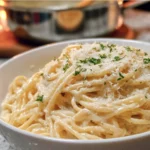
Creamy Alfredo Sauce
- Author: Andrew Recipes
Description
Creamy Alfredo Sauce is a rich, velvety pasta sauce made from butter, cream, and Parmesan cheese. It’s perfect for coating fettuccine, drizzling over vegetables, or adding a luxurious touch to chicken and seafood dishes. With its smooth texture and indulgent flavor, this classic Italian-American sauce transforms any meal into comfort food bliss.
Ingredients
4 tablespoons unsalted butter
3 garlic cloves, minced
1 ½ cups heavy cream
1 ½ cups freshly grated Parmesan cheese
1/2 teaspoon black pepper
Salt to taste
1 tablespoon chopped parsley (optional)
Instructions
In a medium saucepan over medium heat, melt the butter. Add garlic and sauté for 1 to 2 minutes until fragrant, being careful not to brown it.
Pour in the heavy cream, stirring constantly, and bring to a gentle simmer.
Reduce heat to low and slowly whisk in Parmesan cheese until the sauce becomes smooth and creamy.
Season with black pepper and salt to taste.
If desired, stir in parsley for a fresh finish.
Serve immediately over pasta, vegetables, or your favorite protein.
Notes
For a thicker sauce, let it simmer an extra minute after adding the cheese.
Use freshly grated Parmesan for the best flavor and texture—pre-shredded varieties may cause a grainy sauce.
This sauce can be made ahead and reheated gently over low heat, adding a splash of cream if it thickens too much.
